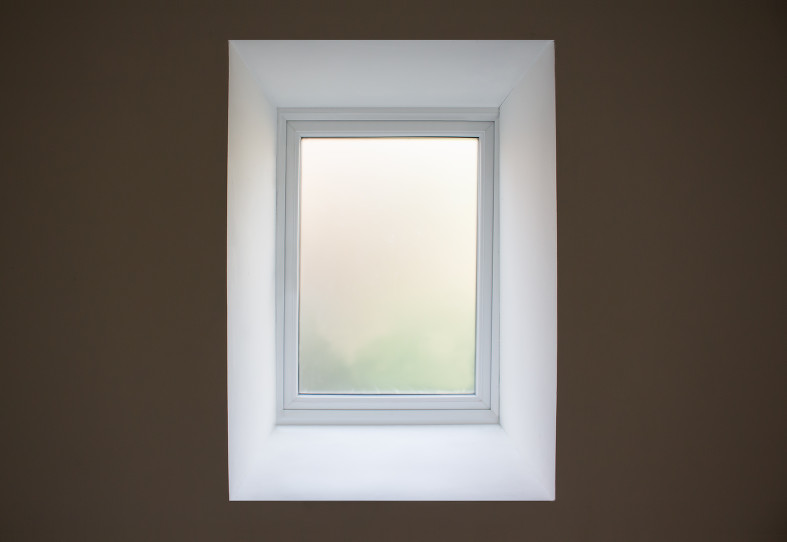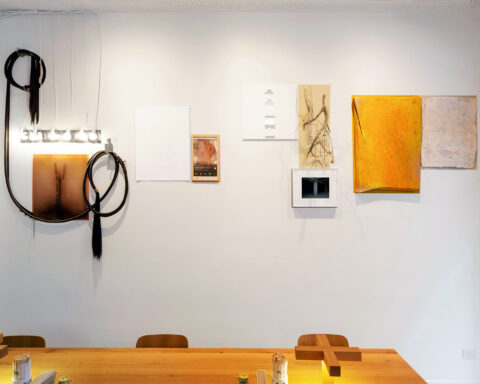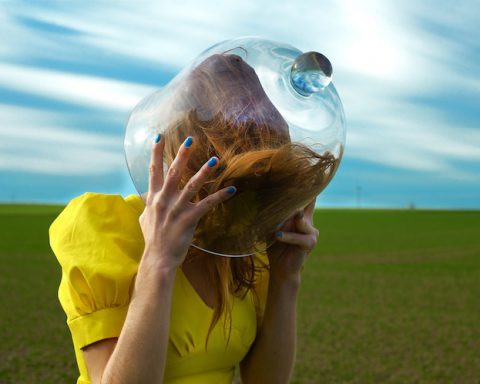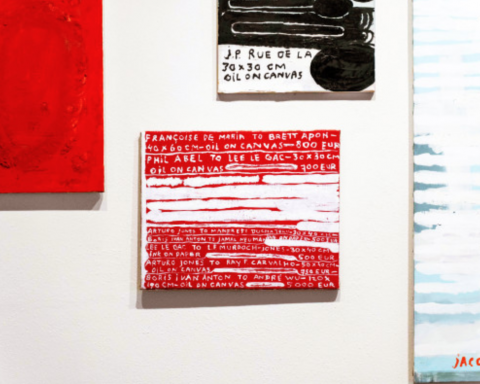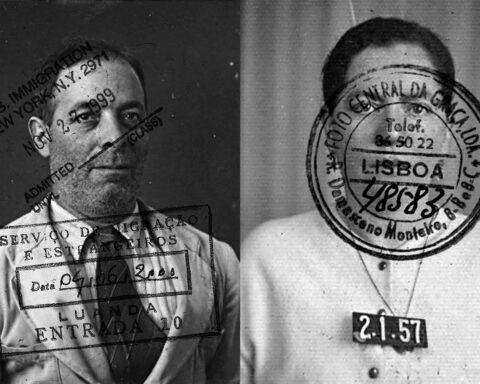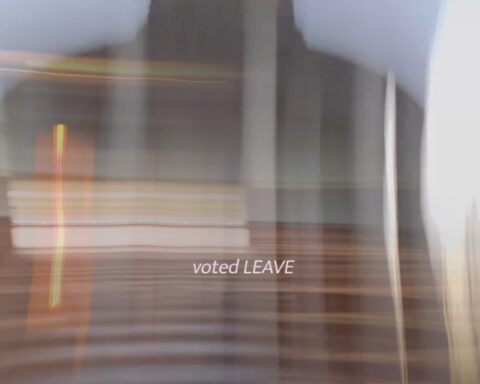Thomas Garnon (born 1990) is a Welsh artist working between London and Wales. Working across site-specific installation, drawing, and photography, Garnon explores the boundaries between perception and place. Using readily available materials, he aims to create temporary interventions that engage with the surrounding environment, activating a new level of awareness for the viewer.
Since graduating from his Bachelor of Fine Arts Degree from Central Saint Martins in 2013, Garnon has continued to exhibit his work both in the UK and internationally. Previous shows include: Nes Artist Residency, Iceland, 2016; The Awe of the Other, Suffolk, 2014; Show 1, The Granary Building, London, 2013; Co.Lab 5, Summit Gallery, London, 2012; to name but a few.
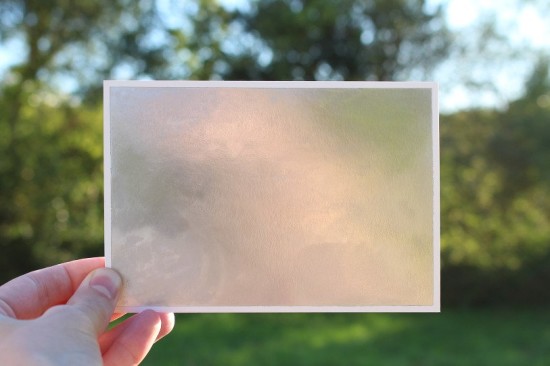
Francesca Pirillo: What are the most important influences that have moved you as an artist?
Thomas Garnon: I grew up in a very rural area of Pembrokeshire, West Wales. It’s known for its vast coasts and mountainous terrain, and so the landscape has always been an integral source of inspiration for me.
I was a very curious child and spent most of my time exploring different landscapes, and as a result am very inquisitive of my changing environments. This upbringing had a great influence on my sensibilities as an artist. Even now, I am constantly searching for new ways of perceiving my surroundings, using nature as the main protagonist.
I also come from a very artistic family; both my grandparents are artists, so from a very early age I was constantly being exposed to galleries and museums. I remember the first time I saw Monet’s water lilies at The Musée de l’Orangerie in Paris; this blend of architecture, light, and colour, had a profound impact on my artistic identity.
F.P.: How would you describe your work to a complete stranger?
T.G.: The aim of my work is to challenge my own interpretation of place. Working across site-specific installation, drawing, and photography, my works are often subjected to the effects of time – changing, evolving or visible only at specific times of day. Using subtle methods of intervention and abstraction, patterns rhythms and formations are created organically becoming unique recordings of ordinary daily events.
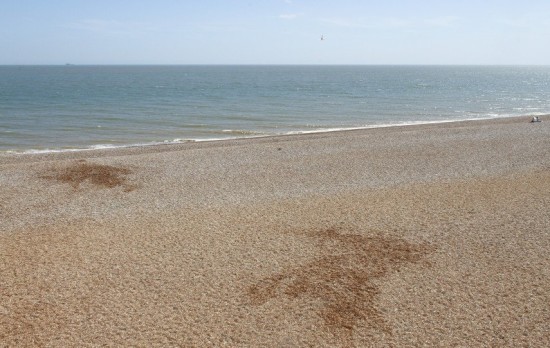
In the Offing (Surface Cloud), 2014. installation view at Aldeburgh Beach, seawater on stone. Captured at 1pm 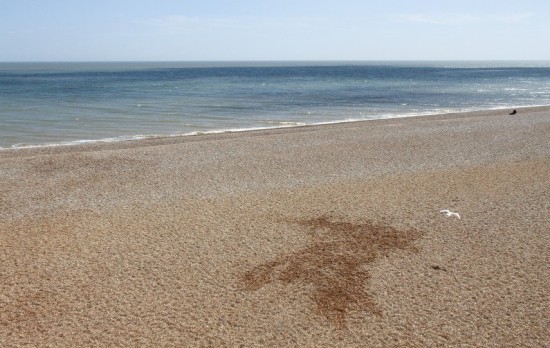
In the Offing (Surface Cloud), 2014. installation view at Aldeburgh Beach, seawater on stone. Captured at 1pm 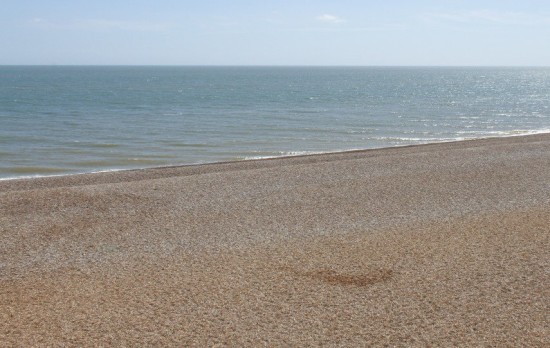
In the Offing (Surface Cloud), 2014. installation view at Aldeburgh Beach, seawater on stone. Captured at 1pm
F.P.: How would you best define your approach to abstraction?
T.G.: Abstraction has always been a means of creating a new level of awareness for me. Over the past few years, I have found myself becoming more and more interested in abstracting my own understanding of the familiar in relation to my surroundings.
Approaching this subject with a lightness of touch, I use it as a method of creating imagery that gesture to its origin, but also allows for a more fluid interpretation on behalf of the viewer.
F.P.: What artists have influenced you?
T.G.: When I was in my final year of university, I came across the work of Edith Dekyndt. Dekyndt is a Belgian artist who works across a wide range of materials and mediums, including painting, video and installation. What drew me to her practice was her relationship with time, and how this can be manipulated to be a prominent feature in a works interpretation. Time, and the duration of a works existence, is a prominent feature in much of my recent work.
I’m fascinated in the possibility of a piece of art continuing to evolve even after I have taken time away from it. Time in this instance, is the mark maker, and the materials are a catalyst.
F.P.: Tell us about your site specifics, how the environment interacts with the work?
T.G.: I have never had any specific set of rules that I think of before installing a piece of work in the landscape. If I can, I like to spend as much time as possible in the space so I can gain a proper understanding on what might work well there. The environment has always had an integral role in the success of an artwork; it isn’t simply a location for a piece to sit in, but rather what activates it, and brings it alive. In my most recent series, architecture and light are fundamental in bringing awareness back to what already existed in the space beforehand.
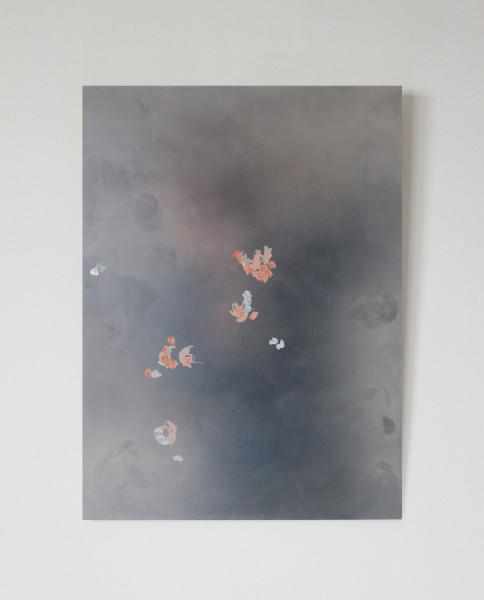
Untitled, 2014
Installation View
Silver Metallic Paste on Hardboard
Flowers.Glass Vase.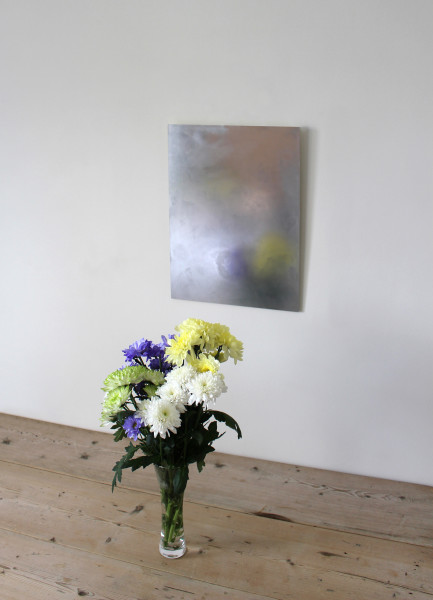
Untitled, 2014
Installation View
Silver Metallic Paste on Hardboard
Flowers.Glass Vase.
F.P.: How has your work developed throughout the years?
T.G.: Over the past few years I have found myself becoming more self-critical on what I create and put into the world; because of this I have been developing a more refined and subtle aesthetic approach.Early on in my career I was focused on making work in a very documentarian style, re-telling a story or event using video and installation as a method of capturing a very specific moment in real time. But recently I have found myself developing on that methodology, using everyday materials and constructs; I focus on what already exits in a space, rather than filling the space with more objects. Using materials that seem part of its original environment, I hope to create situations in which the audience can gain a heightened experience from a commonly viewed object or event.
F.P.: Could you talk about In the Offing (Surface Cloud) and the idea behind?
T.G.: In the Offing (Surface Cloud) is a site-specific installation that I created during a residency at the Aldeburgh Beach Lookout, Suffolk, in 2014. This was the first time I had experimented with large-scale environmental artwork, and I was very interested in exploring the possibility of creating a piece of land art that could exist temporarily but also move in synch with the turbulent environment it was situated in.
Using materials that were readily available to me, I created large gestural marks resembling cloud formations onto the shore using seawater. Utilizing the high concentration of salt in the water, these formations would begin to evaporate and fade over the course of a day, and then overnight when the moisture in the air became denser, the salt would absorb the water back into itself and the formations would begin to reappear on the ground, though hygroscopy. This play on longevity had a lasting impact on me, and resulted in the body of work I am exploring on at the moment.
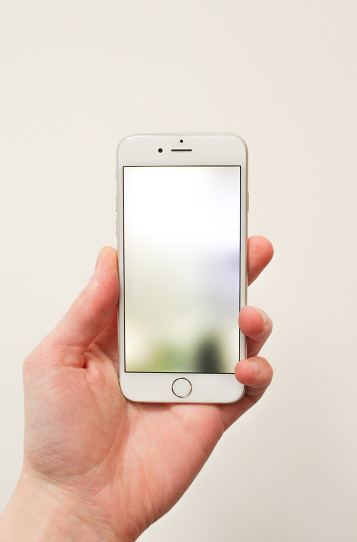
F.P.: What are you working on now, and what are your plans for the future?
T.G.: Over the past year I have been exploring the possibility of my work self-creating its own visual imagery. By engaging with materials that utilize the surrounding environment, I am manipulating my works so that they will continue to develop their own pictorial identity with no need for further physical interaction on my behalf.
These works can continue to evolve for an unprecedented period of time, constantly moving in synch with the topography of the surrounding area. Subtle in appearance and often blending in with the architecture of the building, these small-scale installations use clear frosted vinyl as a material for abstracting; blurring landscapes that appear beyond the window pane into a series of unique painterly formations of light and colour. With every nuance of light the image changes, each composition may only exist for a short period of time before fading away. Therefore these works sit within a constant flux, moving between the seen and unseen; requiring time and patience to be viewed they challenge the contemporary idea of instant gratification.


